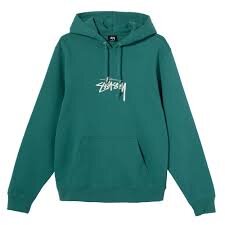Teenagers often search for fresh, meaningful ways to understand themselves and express their individuality. While traditional notebooks or sketchpads are tried-and-true companions, an inventive trend is captivating creative minds everywhere: journals in a bottle. This approach blends the intimacy of journaling with the imaginative flair of crafting, encouraging young people to capture thoughts, dreams, and artwork inside transparent vessels. It’s not just about writing; it’s about curating pieces of identity and presenting them in a form that feels magical and deeply personal.
Power of Journaling for Teens
Adolescence is a season of rapid change—academics, friendships, and self-discovery all compete for attention. Journaling offers a quiet space where teenagers can process their emotions and nurture self-awareness. Numerous studies highlight the mental-health benefits of expressive writing, from reducing anxiety to boosting mood and clarity. When teens learn to articulate their feelings, they become better equipped to navigate challenges with resilience and empathy.
But sometimes, a blank page can feel intimidating. That’s where creative twists like journaling in a bottle can help. By transforming the experience into an art project, young writers see their stories and reflections as treasures worth preserving.
What Is a Journal in a Bottle?
A “journal in a bottle” is exactly what it sounds like: a clear container—glass or sturdy plastic—filled with small entries, drawings, or objects that represent the writer’s inner world. Instead of lines on paper, each message can be folded or rolled into scrolls, tucked into envelopes, or paired with keepsakes like pressed flowers, beads, or ticket stubs. The bottle becomes a time capsule, inviting curiosity about the stories sealed inside.
This method encourages teenagers to break free from conventional layouts. They can mix text with sketches, photos, dried leaves, or even tiny origami creations. The final product is part diary, part sculpture—a fusion of thought and artistry.
Why This Creative Medium Resonates
Teens are naturally drawn to tactile, hands-on activities, especially ones that allow them to personalize the outcome. Journals in a bottle speak to this desire by offering flexibility: there are no strict rules, only possibilities. Some may write daily affirmations and roll them into parchment slips; others might compose poetry, capture favorite quotes, or create miniature collages.
The process is equally therapeutic. Filling a bottle with positive reflections or hopes for the future can act as an anchor during turbulent moments. When life feels overwhelming, opening the bottle and revisiting earlier entries provides reassurance and perspective.
Materials and Setup
Creating a journal in a bottle doesn’t require expensive supplies—just a little imagination. Start with a clean, transparent vessel such as a mason jar, decorative bottle, or wide-necked vase. Add tools like colored pens, small sheets of paper, watercolor paints, and stickers. Teens can also recycle materials: magazine clippings, ribbons, or fabric scraps add texture and charm.
To keep entries organized, consider labeling each with a date or theme. Some teens enjoy crafting tiny envelopes or tags to hold their words, giving the project a scrapbook-like appeal.
Ideas for Themed Bottles
- Dream Bottle: Fill with sketches or writings about hopes, goals, and wild ambitions.
- Gratitude Bottle: Write daily notes of appreciation for people, moments, or simple joys.
- Adventure Bottle: Collect mementos from outings—concert tickets, seashells, or hiking maps.
- Mood Bottle: Use colors or emojis on slips of paper to record emotional check-ins.
- Story Bottle: Develop a continuing short story, adding a new chapter each week.
Each theme invites creativity while gently guiding teens toward introspection.
Connecting Art and Mindfulness
Artistic journaling is not only expressive but also mindful. As teenagers decorate slips of paper or design their bottles, they engage in soothing, focus-building activities. The repetitive actions of folding paper, tying ribbons, or arranging items cultivate calm and presence—qualities that are increasingly valuable in our fast-paced digital age.
By combining mindfulness and self-expression, journals in a bottle help teens slow down, reflect, and appreciate the beauty of small details.
How Parents and Educators Can Support
Parents, teachers, and counselors can introduce this idea in classrooms, clubs, or at home. Setting aside time for “bottle journaling” allows teens to explore emotions safely and privately. Adults can encourage them without pressuring for perfection—remind them that the value lies in honest expression, not in creating flawless art.
Workshops or group projects can also be effective. Sharing techniques, swapping decorative ideas, or even exchanging anonymous encouraging notes to place inside bottles can foster a sense of community and empathy.
Recommended Reading and Guides
For those who want to dive deeper, resources like Book For Teenagers Creative Journals In A Bottle provide thoughtful guidance on techniques, prompts, and craft tips tailored to adolescents. This book inspires readers to experiment with lettering, collage, and storytelling, offering step-by-step suggestions for making their bottles uniquely personal. By blending creativity and emotional growth, it empowers young people to see journaling as both an artistic pursuit and a pathway to self-understanding.
Lasting Benefits for Teen Development
Keeping a creative journal in a bottle teaches more than artistry. It nurtures patience, as entries accumulate over time, and fosters gratitude, as teens revisit cherished memories. It strengthens writing skills, sharpens observation, and builds confidence in sharing one’s voice—even if only with oneself.
Conclusion
In a world dominated by instant communication and scrolling feeds, journals in a bottle offer a refreshing pause—a chance for teenagers to craft something lasting and heartfelt. They combine the reflective power of journaling with the joy of artistic exploration, creating a space where imagination and identity flourish.





